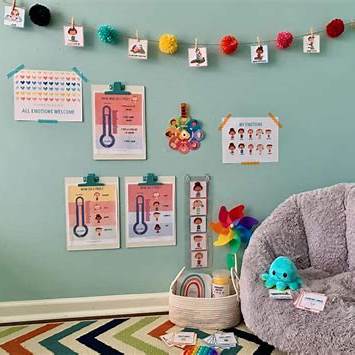Children with ADHD often experience intense emotions and struggle with self-regulation. When overstimulated, frustrated, or anxious, they may react with restlessness, tantrums, or shutdowns. Teaching calming techniques is not only possible—it’s essential.
Here are practical, tested, and child-friendly methods that help children with ADHD calm their bodies and minds.
Why Calming Techniques Are Crucial
Children with ADHD may:
- Be more sensitive to sensory input (noise, lights, crowds)
- Have difficulty pausing before reacting
- Become easily overwhelmed by transitions or frustration
Helping your child develop calming tools supports emotional regulation and prevents behavior from escalating unnecessarily.
1. Deep Breathing Exercises
Simple breathing activities can trigger the body’s relaxation response. Try:
- “Smell the flower, blow out the candle” (inhale slowly, exhale slowly)
- Using a pinwheel or feather to guide breaths
- Belly breathing with a small stuffed animal rising and falling on the tummy
Practice during calm times so your child remembers the technique when emotions rise.
2. Use a Calm-Down Corner
Create a cozy space with:
- Soft pillows, a blanket, or a beanbag
- Fidget toys, coloring supplies, or sensory bottles
- A feelings chart or calming cue cards
This space should be inviting, not a punishment zone. Let the child go there voluntarily or with a gentle prompt.
3. Progressive Muscle Relaxation
Guide your child through a body scan:
- “Squeeze your fists… now relax them.”
- “Tighten your shoulders… now let them go.”
This brings awareness to physical tension and teaches release.
4. Use Music and Sound
Soothing music or nature sounds can shift a child’s mood quickly. Ideas include:
- A calm playlist with soft instrumental music
- White noise machines or gentle rain sounds
- Singing or humming together
Music can help regulate breathing and distract from negative thoughts.
5. Engage the Senses
Sensory input can be grounding. Try:
- Holding a cold object or putting hands in water
- Using scented playdough or essential oils (like lavender or citrus)
- Squeezing a textured stress ball
These actions give the brain something concrete to focus on, shifting attention away from emotional overload.
6. Movement-Based Calming
Some children calm down by moving, not sitting still. Offer:
- Gentle stretching or yoga poses (e.g., “child’s pose,” “tree pose”)
- Slow dancing or swaying to soft music
- Rocking in a chair or on a balance board
This helps burn off anxious energy and regulate mood.
7. Use Visual Tools and Charts
Visual cues can reinforce calming steps. Use:
- Step-by-step posters (e.g., “1. Take a breath, 2. Squeeze a toy, 3. Ask for help”)
- Emotion wheels to identify and label feelings
- Timers to signal when to rejoin an activity
These provide structure and reduce the mental load of remembering each step.
8. Story Time or Guided Imagery
Reading a calming story or leading a guided visualization helps:
- “Imagine you’re floating on a cloud…”
- “You’re on a beach with soft sand and a warm breeze…”
These mental escapes soothe the nervous system and redirect attention.
9. Encourage Expressing Feelings in Safe Ways
Give your child permission to feel and express themselves:
- Journaling (drawing or writing)
- Talking with a trusted adult
- Punching a pillow or stomping feet in a “safe frustration zone”
Validating emotions reduces the urge to bottle them up or act out.
10. Practice Calming Skills Daily
Don’t wait for a meltdown to introduce calming tools. Practice them:
- Before bedtime
- After school transitions
- During family quiet time
This turns calming into a habit, not just a reaction.
Final Thought: Calm is a Skill—Not an Expectation
Children with ADHD often hear “calm down” without being taught how. These techniques give them that “how”—tools they can reach for when the world feels too big or fast.
With consistent practice, these calming strategies empower your child to manage emotions, handle stress, and feel more in control of their body and mind.
